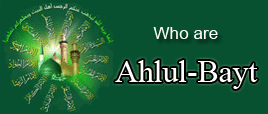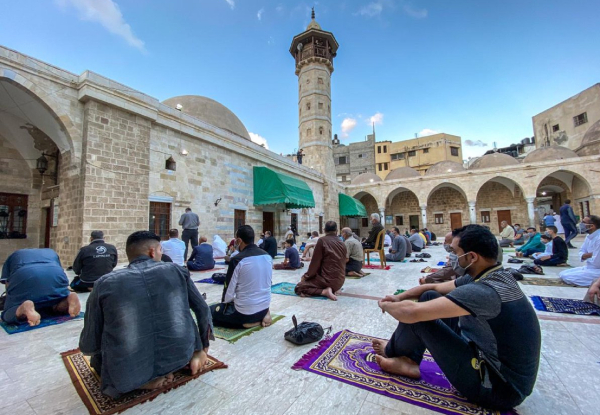Sulaiman: Why do you Shias place a stone before you during the prayers and put your forehead on it during prostration (Sajdah)? It is said that Shias worship that stone.
Ja’far: How can the Shias worship a stone while you know very well that they confess to the Oneness of Allah the Almighty (Tawheed) and the Messengership of the Prophet (s.a.w.s.)?
We do not prostrate upon the one we worship, but we worship Him Alone. It is kept in the front to rest our foreheads.
And if what you say is correct why does the Shia Islamic law makes it compulsory for the worshippers to face the Ka’ba (Qibla) during prayers?
Also it is not a stone, it is dried mud, dried to a fixed shape easy to pick up and can be stored conveniently. Common people call it Turbah. All the Muslims consider it permissible to prostrate on mud and a dried piece of mud.
Sulaiman: Does it mean that Sajdah on anything other than turbah is invalid?
Ja’far: According to Shia jurisprudence a Sajdah is valid only if performed on one of the following substances:
All that is the part of earth, like soil, sand and marble.
All that grows out of the earth but not used for eating or dressing. For example, wood and palm leaves.
Paper.
The above laws are based on the authentic tradition of the Messenger of Allah (s.a.w.s) and his purified household (Ahle Bayt [a.s.])
The Prophet (s.a.w.s.) said, "The earth has been appointed as a pure place of prostration (Sajdah)." The Messenger of Allah (s.a.w.s.) considered performing of Sajdah on other things besides earth to be detestable.
It was seen of the Holy Prophet (s.a.w.s.) that his forehead and nose was smeared in mud due to Sajdah. He did not permit his companions to do Sajdah on anything else, as mentioned in some traditions. When these people complained that the sand of the Mosque was hot he told them to keep it in their hands to cool it and then do Sajdah on it. If it had been allowed to do Sajdah on other things they would never have asked, and the Holy Prophet (s.a.w.s.) also would have advised them to do Sajdah on carpet or durry etc.
(Musnad Ahmad Vol. 1, Pg. 388)
Yes. It is apparent from the traditions that Allah the Almighty permitted the Prophet (s.a.w.s.) and the Muslims to prostrate upon vegetation if it is not generally used for eating and weaving. So the Messenger of Allah (s.a.w.s) made for himself a Khumra. It was small piece knitted palm leaves.
(Sahih Bukhari Vol. 1, Pg. 9, Kitabul Haiz)
Narrated Abu Said Al-Khudri:
I saw Allah’s Apostle prostrating on mud and water and saw the mark of mud on his forehead.
(Sahih Bukhari Volume 1, Hadith 798)
Narrates Abdullah bin Shaddad:
Maimuna said, "Allah’s Apostle was praying while I was in my menses, sitting beside him and sometimes his clothes would touch me during his prostration." Maimuna added, "He prayed on a Khumra (a small mat sufficient just for the face and the hands while prostrating during prayers).
(Sahih Bukhari Volume 1, Hadith 376)
But the earth remains as the best alternative for prostrating and expressing ones submission to the greatness of Allah the glorified. And the Shia Muslims desire to do Sajdah on the earth that is the most blessed and glorified in the whole world. And that is the soil of Karbala, blessed by the presence of Imam Husain (a.s.)’s tomb. And then the soil of Khorasan (Iran) blessed by the tomb of Imam Ali Moosa-ar-Rida (a.s.).
And if the circumstances had allowed we would have had the Turbah of Makkah and Madinah too.
The turbah is considered to be (doubtlessly) absolutely pure and other surfaces may be of doubtful purity. Thus it is best to perform Sajdah on a turbah. And taking of mud from a blessed place is not an innovation in Islam. We see the faqih, Masrooq ibn Ajda (d. 62 AH). always carrying with him a piece of mud of Madinah, and he used to do Sajdah on it. As written in Ibne Abi Shayba’s book, "Al Musannif" in the chapter of ‘Those who pick up something from boat to do Sajdah.’ This tradition is related from two chains of narrators. Whenever Masrooq used to travel in a boat. He used to keep a lump of mud on which he did Sajdah.
(Tabaqaatul Kubra Vol. 6, Pg. 79)

















